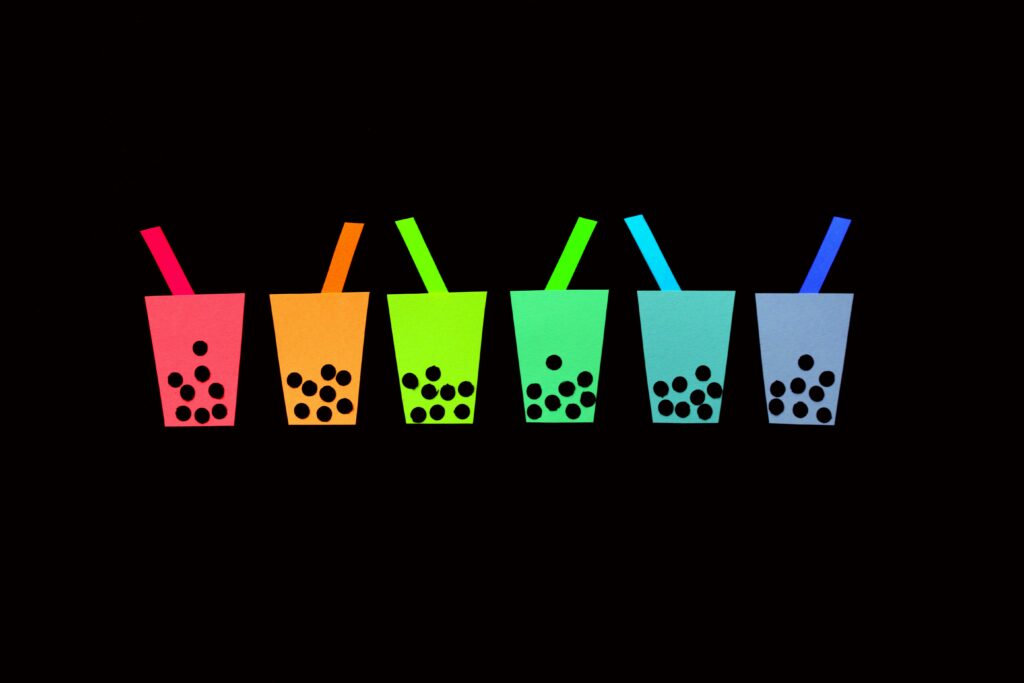
Bubble tea, also known as boba tea, has become a beloved drink around the world, captivating taste buds with its delightful combination of flavors and textures. But what exactly is bubble tea, and what makes it so special? Join us as we delve into the origins, ingredients, and cultural significance of this iconic Taiwanese beverage.
A Brief History
Bubble tea traces its roots back to Taiwan in the 1980s, where it was first concocted by innovative tea vendors looking to differentiate themselves in a competitive market. The original version of bubble tea consisted of brewed tea, sweetened milk, and chewy tapioca pearls, shaken together to create a refreshing and satisfying drink.
The Ingredients
At its core, bubble tea typically features four key components:
- Tea: Traditionally, black or green tea serves as the base for bubble tea, although fruit teas and herbal infusions have become popular variations. The tea is brewed and then chilled before being combined with other ingredients.
- Milk or Non-Dairy Alternatives: To add creaminess and sweetness, milk or non-dairy alternatives like almond milk or coconut milk are often added to bubble tea. This creates a smooth and velvety texture that complements the tea’s flavor.
- Sweetener: To enhance the drink’s sweetness, a sweetener such as sugar syrup, honey, or flavored syrups like taro or lychee are incorporated into the mixture. The level of sweetness can be adjusted according to personal preference.
- Tapioca Pearls: Perhaps the most iconic element of bubble tea, tapioca pearls are small, chewy balls made from tapioca starch. These pearls are cooked until they reach a gelatinous consistency, then added to the bottom of the drink, where they provide a satisfying textural contrast to the liquid components.
Variety and Customization
One of the most appealing aspects of bubble tea is its versatility and customizability. With a myriad of flavors, toppings, and variations to choose from, each bubble tea experience can be unique. Some popular flavor options include taro, matcha, mango, and jasmine, while toppings like fruit jelly, aloe vera, and pudding offer additional layers of taste and texture.
Moreover, many bubble tea shops offer customization options, allowing customers to adjust the sweetness level, the type of milk used, and the amount of ice in their drinks. This flexibility ensures that everyone can tailor their bubble tea to suit their preferences.
Cultural Significance
In addition to its delicious taste and customizable nature, bubble tea holds cultural significance as a symbol of Taiwanese culinary innovation and creativity. What began as a local specialty in Taiwan has evolved into a global phenomenon, beloved by people of all backgrounds.
Furthermore, bubble tea has become a cultural touchstone for Taiwanese and Asian communities around the world, serving as a source of pride and connection to their heritage. Its widespread popularity has helped to introduce Taiwanese culture to a broader audience, fostering appreciation and understanding across cultural boundaries.
In conclusion, bubble tea is more than just a beverage—it’s a delicious fusion of flavours, textures, and cultural influences that has captured the hearts of people worldwide. Whether you’re sipping on a classic milk tea or indulging in a creative fruit blend, every bubble tea experience is a delightful journey into Taiwan’s rich culinary landscape.
Leave a Reply